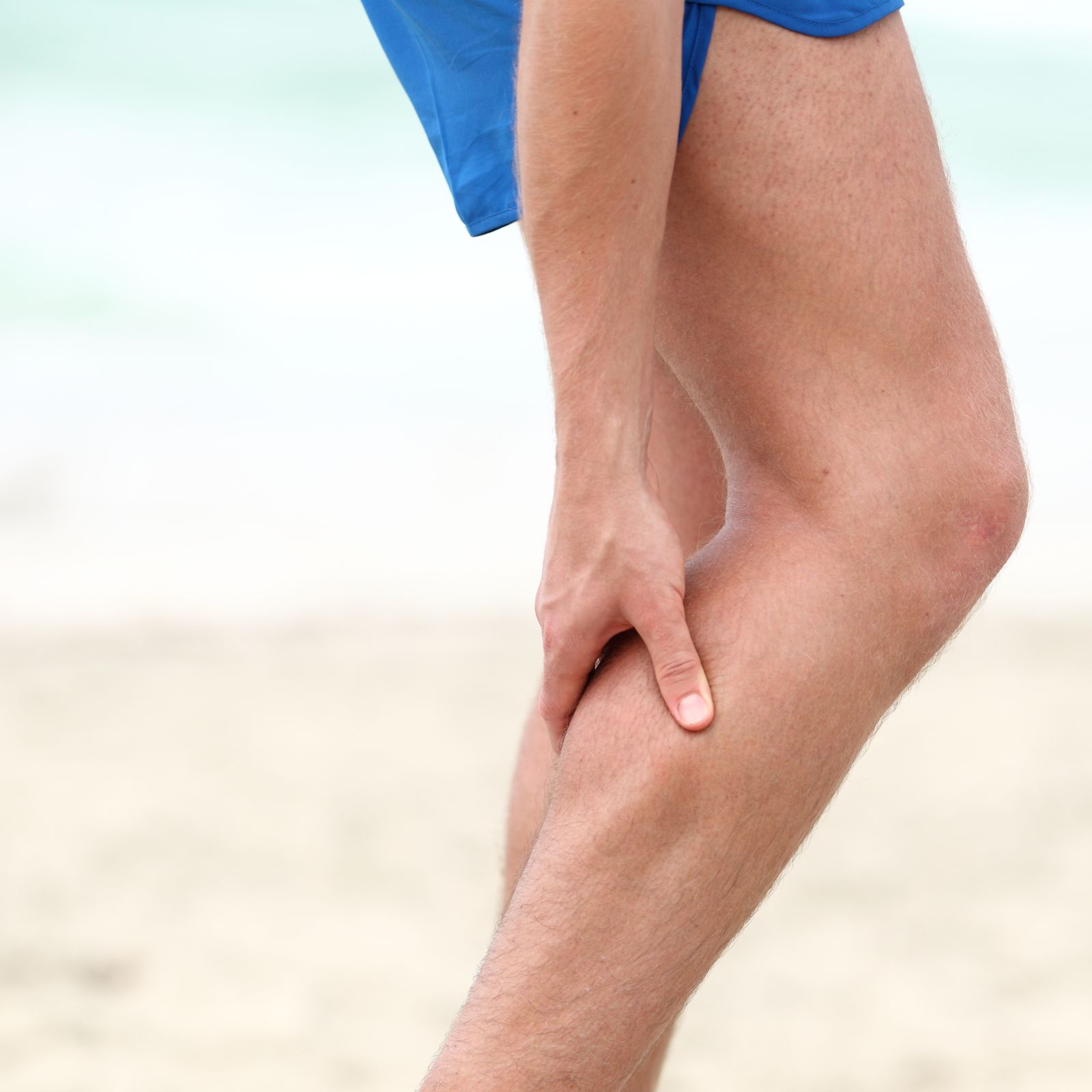If you’ve ever been there (which most of us have) you’ll know just how painful cramp can be. It can leave you feeling as though your muscles are in spasm and can completely stop a training session. Cramping often starts with a slight twitch or tightening in your muscle and can lead to acute pain, stiffness, visible bulging or knotting of the muscle and soreness that can sometimes last for several days (Minetto et al, 2016). It is an involuntary contraction of a muscle and commonly occurs in the calf muscles (Bradley et al, 2008).
Cramping can occur spontaneously or can be induced by exercise. If you’re prone to it developing, knowing what you should and shouldn’t do to try to stop it happening can help. But first of all, what is it and why does is happen?
Causes of Cramping:
Dehydration and Electrolyte Loss:
Traditionally, people have blamed cramping on being dehydrated or deplete in electrolytes, often through exercising in hot and humid conditions. This has been a common belief, particularly if any cramp occurs during or after intense exercise. The theory suggests that a combination of fluid and electrolyte loss together with an increase in body temperature can cause muscles and the nerves that innervate them to malfunction, thereby producing muscle cramps. However, research indicates that even when carbohydrate-electrolyte fluids are ingested at a rate which matches sweat loss, cramping doesn’t resolve in everybody. Therefore, whilst cramping which occurs during exercise may coincide with a significant electrolyte and/or fluid loss, the underlying cause of it does not appear to be dehydration and reduced electrolyte levels (Qui & Chang, 2017).
If dehydration and electrolyte levels aren’t the cause of cramping, then what is? Research indicates that cramping primarily has a neuromuscular cause and is instead caused by increased excitability of the nervous system.
Neuromuscular Excitation:
The neuromuscular theory of cramping during exercise proposes that muscle overload and neuromuscular fatigue cause an imbalance between the excitatory impulses from the muscle spindles and the inhibitory impulses from the Golgi tendon organs. Muscle spindles and the Golgi tendon organs are two important proprioceptors which work together reflexively to regulate muscle length and tone via alpha and gamma motor neurons. When the Golgi tendon organ is excited, it causes the muscle to relax. When the muscle spindle is excited, it causes a muscle to contract. Any disturbance in the activity of these proprioceptors can lead to increased motor neuron activity and motor unit recruitment. This can lead to cramping, particularly when the muscle is contracting in an already-shortened position. It can also be induced by faulty posture, intense exercise and fatigue during exercise. The reduced tension in the muscle tendon likely reduces the inhibitory feedback from the Golgi tendon organ afferents, thereby predisposing the muscle to cramp from the imbalance between inhibitory and excitatory drives to the alpha motor neuron. This enhanced excitability at the spinal level results in an increase in alpha motor neuron discharge to the muscle fibres, producing a localised muscle cramp (Nelson & Churilla, 2016; Qui & Chang, 2017).
In other words, muscle cramping occurs due to hyper-excitability of the nerves, in particular the alpha-motor neurons. These are nerves which connect the spinal cord to the skeletal muscles. When there is excess firing of the neurons, they can switch your muscles on, resulting in an involuntary contraction leading to muscle spasm or cramp.
Importantly, the risk of whether you cramp or not can vary from person to person. Interestingly, research indicates that someone who is prone to cramping requires less electrical or nerve stimulation to produce a cramp compared to someone who doesn’t suffer from cramping. This suggests that if an individual regularly suffers from cramp, their neuromuscular system may be more sensitive to cramping. Cramping can also be affected by the level of neuromuscular muscle fatigue, fuel deficiency, accumulation of metabolic wastes, muscle damage, a lack of conditioning and/or acclimatisation (Qiu & Chang, 2017). It can even be affected by the level of sleep someone has had. This means that cramping can be individual to each person depending on which factors affect you and to what extent.
To help prevent cramping, it’s worth paying attention to whether any particular factors trigger it. Risk factors can include:
- Previous history of cramping
- Previous damage to ligaments or muscles. E.g.: muscle strain or tear
- Lack of sleep
- Increased intensity or frequency of exercise
- Muscle fatigue
- Nutritional changes including fluid and sodium intake
- Muscle glycogen depletion
- Poor biomechanics or technique
If you’re starting to struggle with cramping or it’s occurring more frequently than normal, addressing any relevant factors can help you to target the cause of your cramps. In doing so, you can then try to address these factors to help prevent cramping.
If you’re ever affected by cramp, then check out our forthcoming blog on how to prevent cramp. It will give you the ins and outs of what works and what desn’t.


